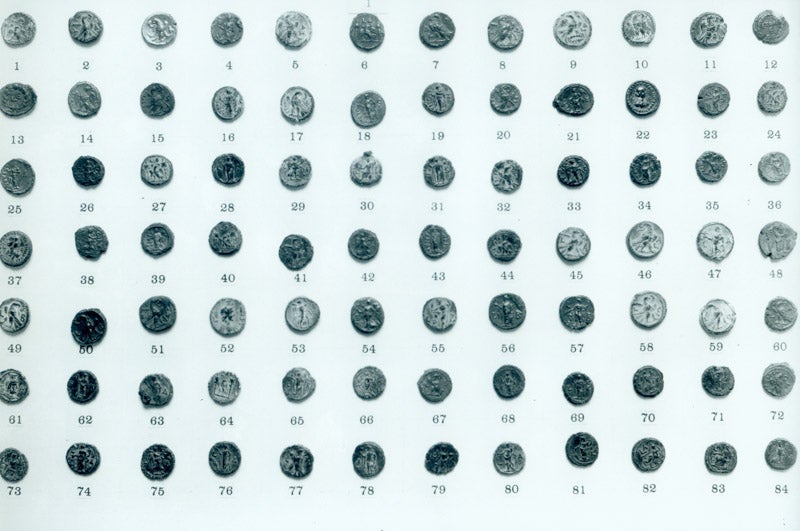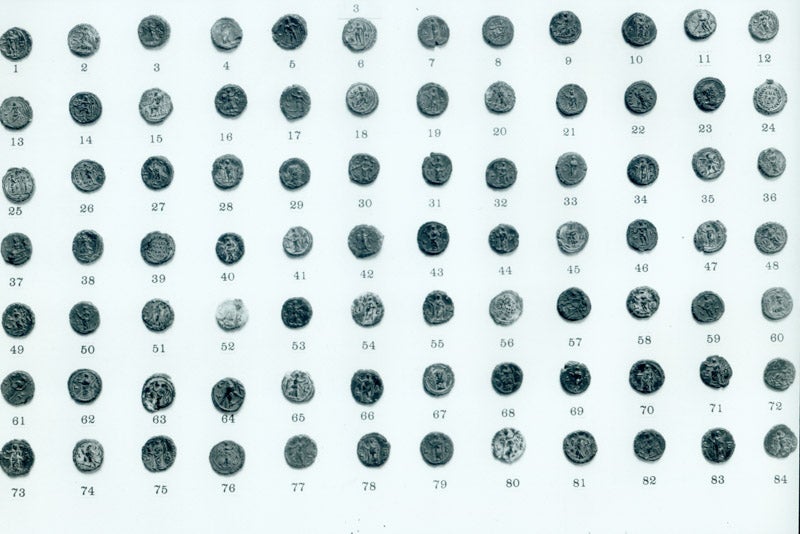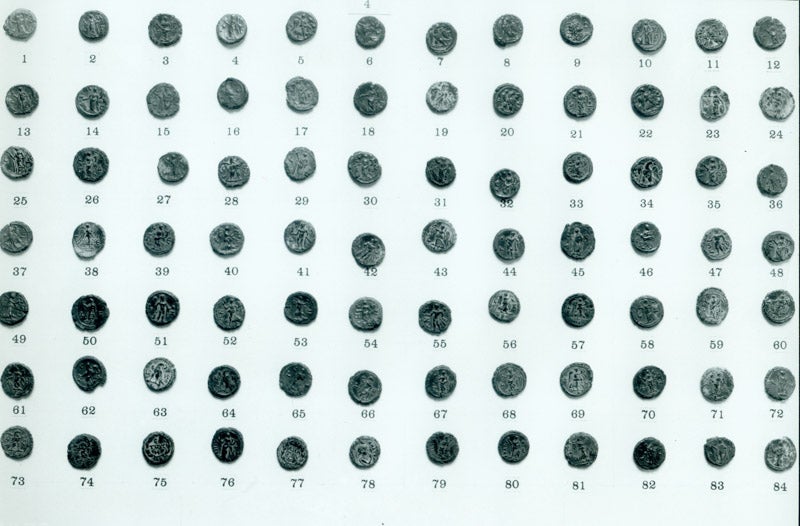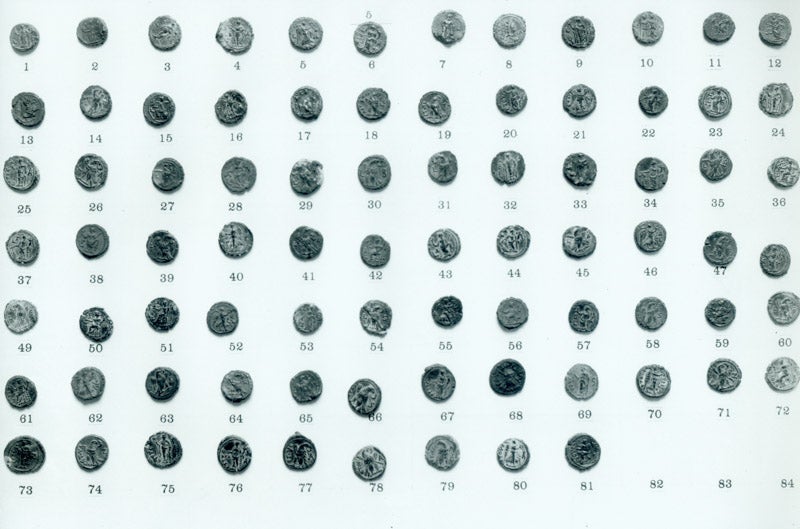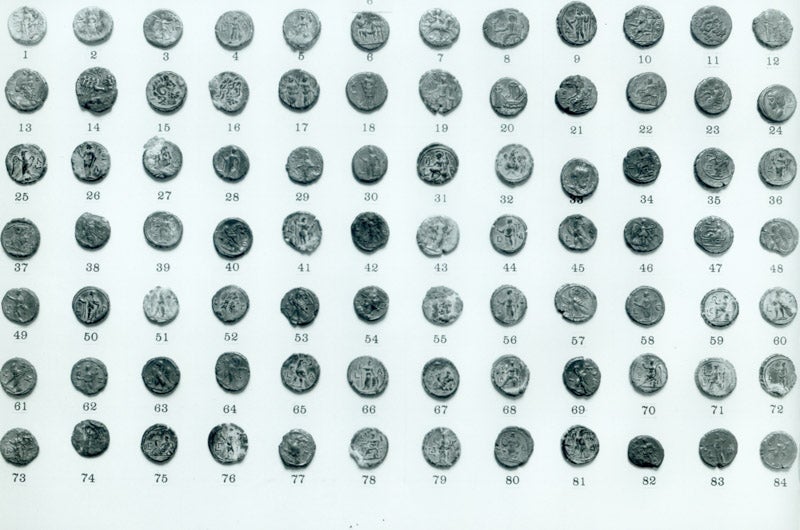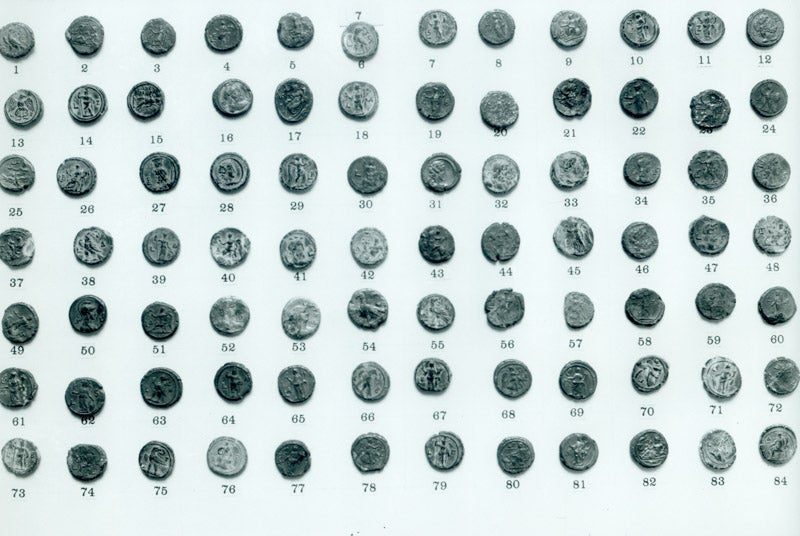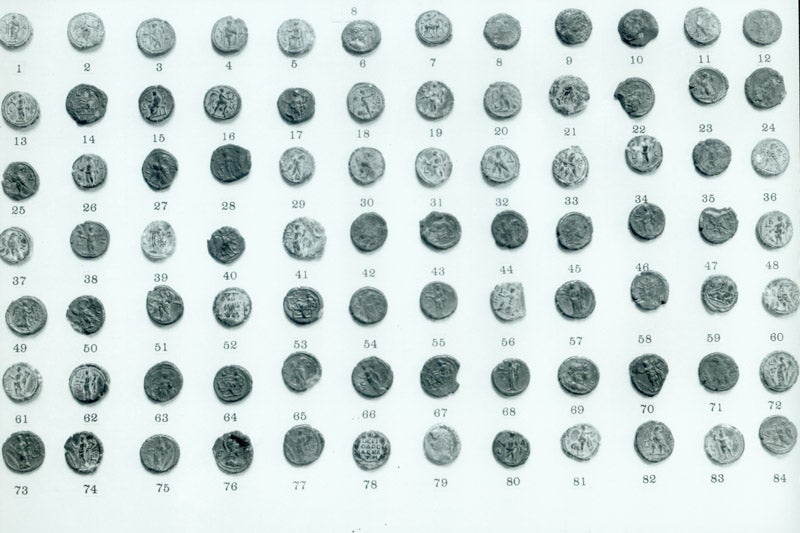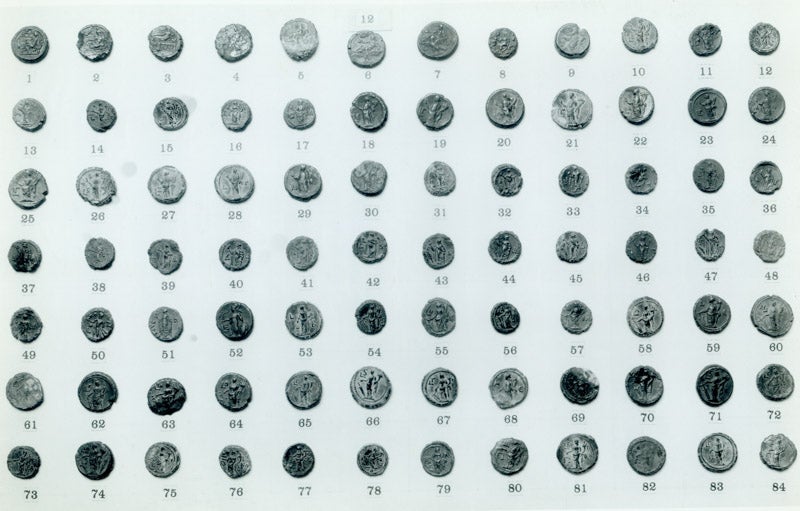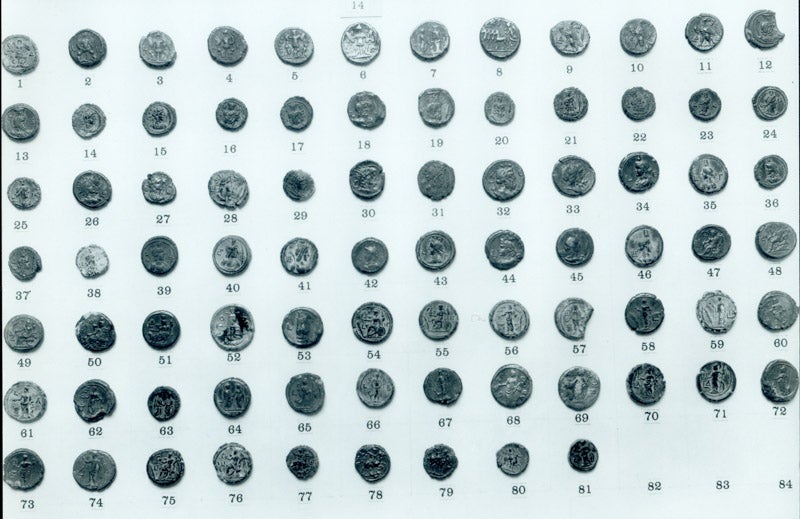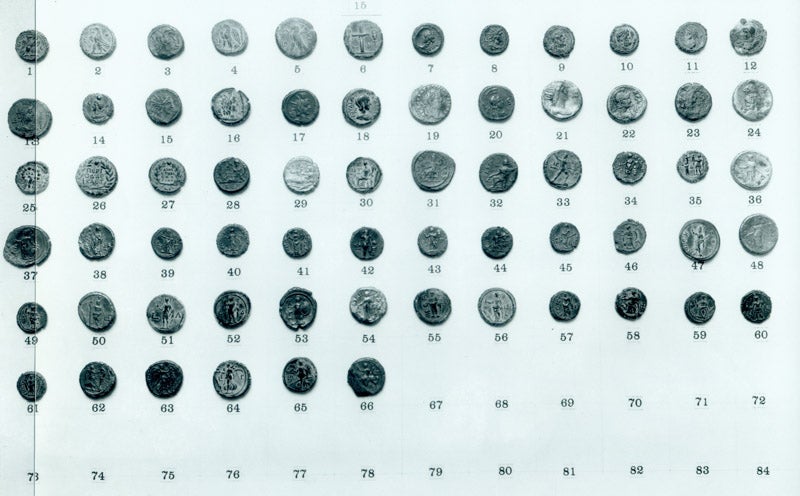By Sebastián Encina, Collections Manager
Friends of the Kelsey Museum are quite familiar with the excavations of Karanis and how that project makes up a significant portion of our artifacts and archival collections. The Kelsey has published numerous books and articles about Karanis and the artifacts found there, and we have mounted various exhibitions related to the site and its interpretation.
Even now, almost 100 years since the start of the University of Michigan excavations at the site, materials from Karanis continue to draw researchers who are posing new questions. The existing literature is of course still useful, but new pairs of eyes are looking at the excavation data in different ways and asking new questions. This is exciting for us; new scholarship enlivens the collection.
For this month’s “From the Archives,” we highlight the work of one of those new sets of eyes. This year, the Kelsey is honored to welcome a new assistant curator of numismatics, Irene Soto Marín. Many of you may already have read some posts on her new blog, The Social Lives of Coins. Since she arrived in September, Soto Marín has been working through the Kelsey’s numismatic collection, paying specific attention to the nearly 30,000 coins from Karanis (about three-quarters of the entire coin collection).
As artifacts were excavated at the site, the Karanis team would work with officials from the Egyptian Department of Antiquities to decide which items could return to Ann Arbor and which were to stay in Egypt. This system of partage was common throughout foreign excavations in the early part of the 20th century; most of the objects in the Kelsey Museum are here as a result of partage. We also hold the Division Albums from Karanis—photographs of similar items of all kinds (wood, stone, pottery, textiles, etc.) that the Antiquities officials would consult to decide how to divide the finds. The album pages showing the excavated coins are what we present here. These photographs were taken in February 1935.
The Karanis coins were published by Rolfe Haatvedt and E.E. Peterson in 1964, yet they still offer much to discover and learn. Soto Marín and other researchers will continue to study them and produce new publications that will give us greater glimpses into life in Roman Egypt. The Kelsey Museum holds only a portion of the coins that were excavated at Karanis; the photographs from the Division Albums show us those that remain in Egypt. From these photographs and the coins in Ann Arbor, Soto Marín can teach us so much about the site, the times, and the people of Karanis.
We are excited to work with new researchers, and even more excited that one is now at the Kelsey Museum. There is still so much to learn about Karanis. As we make the collections more accessible, we will be able to get more voices, eyes, and minds on the materials and generate new scholarship. Photographs like these are just one way we can ensure such research continues.

